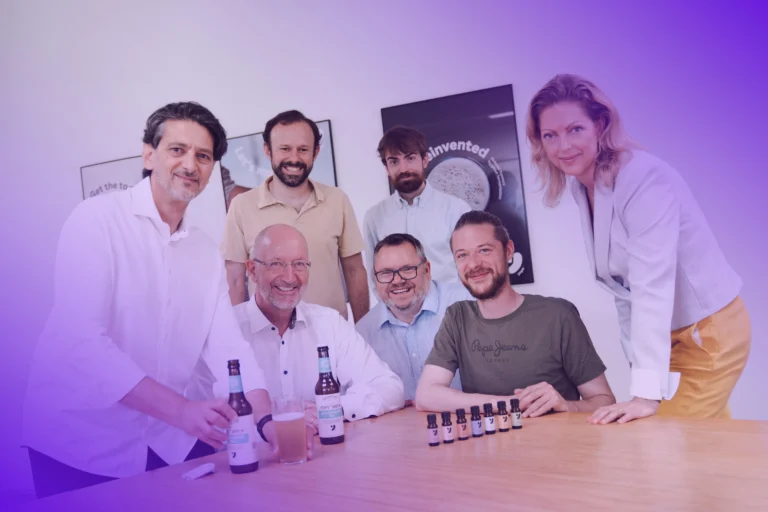

Danish breakthrough turns clover grass and lucerne into clean-tasting protein for human foods
Danish scientists have unveiled a breakthrough that could transform two humble forage crops – clover grass and lucerne – into a new source of sustainable, food-grade protein for people, helping ease pressure on traditional agriculture while advancing the European Union’s green goals.
Clover grass and lucerne, long used as feed for ruminant animals, have a host of environmental advantages that make them appealing candidates for human food production. They thrive with little to no fertilizer or pesticides, support carbon and nitrogen sequestration, withstand drought thanks to deep root systems, and have long growing seasons with high protein yields per hectare. They also help reduce nutrient runoff into groundwater and nearby waterways, a growing concern for European agriculture.
Yet despite their promise, proteins extracted from these crops have so far been confined largely to animal feed markets in countries like Denmark, the Netherlands, and France. Traditional heat-based methods used to extract protein degrade its quality and leave behind a strong green color, grassy taste, and odor – qualities unacceptable in human food products.

To address this, researchers at Aalborg University, led by Professor Mette Lübeck from the Department of Chemistry and Bioscience, have developed a two-step membrane filtration method capable of separating food-grade proteins from other plant components. The innovation is the product of several research initiatives, including the Grass4Food and HQProtein projects, which are exploring how to unlock new protein sources to meet rising global demand.
“Our method preserves the protein’s natural structure while removing undesirable components like chlorophyll, fibers, and microbes,” Lübeck explained. Central to this new approach is the extraction of RuBisCO, an abundant protein in green leaves known for its excellent solubility, emulsification, foaming, and gelling properties. These functional qualities are of high interest to the food industry, which has long struggled to find plant proteins that can match the versatility of animal-derived ingredients.
The process mirrors the techniques used in whey protein production, where membrane filtration helps isolate high-purity proteins for food and beverage applications. Using similar technology for green crops opens the door to a new class of plant-based functional ingredients that could help replace imported soy and other less sustainable protein sources.
According to the team, the filtration process removes color and odor while concentrating water-soluble proteins without denaturing them. This capability could significantly expand the potential uses of these proteins in human food applications – from plant-based meats to bakery products, dairy alternatives, and protein supplements.
Beyond the protein itself, the technology produces a fiber-rich fraction left over from the extraction process. This byproduct remains valuable for ruminant livestock feed and could also find uses in biogenic building materials, textiles, or even biogas production, reflecting a circular bioeconomy approach that maximizes every part of the crop.
Danish company BiomassProtein, led by Peter S. Lübeck, is piloting the membrane technology with the aim of scaling it for industrial production. The approach is not limited to clover grass and lucerne; researchers are investigating its application to other underused leafy crops such as beet, carrot, potato, hemp, and cassava leaves through the Leaf2Food project. This could further diversify the sustainable protein portfolio and enhance the use of local bioresources in Europe and beyond.

The research has attracted support from major funding bodies, including the Green Development and Demonstration Programme (GUDP), the Novo Nordisk Foundation, and The Independent Research Foundation of Denmark.
The implications for policy are significant. The European Union’s Green Deal and Farm to Fork Strategy call for more sustainable and circular food systems, as well as strategic autonomy in protein supplies. Innovations like membrane-filtered clover grass and lucerne proteins could help reduce Europe’s dependence on imported soy protein while lowering the environmental footprint of food production.
However, regulatory hurdles remain. In Europe, proteins derived from clover grass and lucerne are considered 'novel food' under EU legislation. That means any product intended for human consumption must undergo safety assessments and obtain official approval before reaching the market – a process researchers describe as opaque and lengthy.
“The regulations are very difficult to work with, and it takes several years to get a new product approved,” Lübeck said. As the EU seeks to promote sustainable food solutions, she and others argue for clearer rules and faster approval processes to bring novel proteins to consumers.
As work continues to commercialize the technology, the Danish team remains focused on overcoming technical and regulatory barriers. Their efforts could ultimately reshape how protein is produced and consumed, offering a greener alternative that makes the most of crops long overlooked as human food.
If you have any questions or would like to get in touch with us, please email info@futureofproteinproduction.com


-p-800.jpg)



